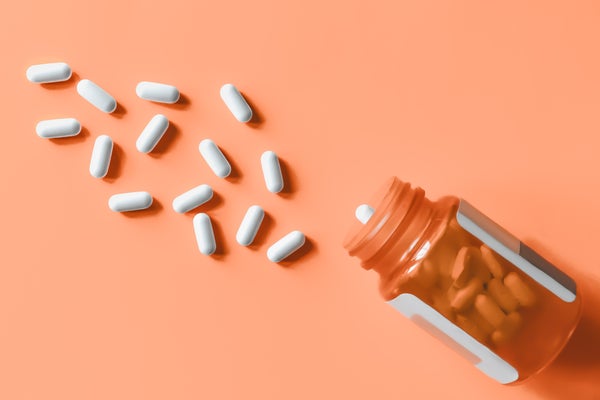This article was published in Scientific American’s former blog network and reflects the views of the author, not necessarily those of Scientific American
In four months, COVID-19 has transformed the world. Thousands of lives have ended, billions are in quarantine, and global economies have shed trillions of U.S. dollars. Regaining control will depend on our ability to model and implement effective physical distancing measures, provide sufficient respirators and protective gear, maintain functioning health systems, and develop effective vaccines, therapies and rapid diagnostics. Control is also crucially dependent on the continued ability of our antibiotics to stay on top of bacterial pathogens.
It may seem strange to focus on antibiotics during a viral pandemic. However, bacterial superinfections are often what make pandemics like COVID-19 especially deadly. During the 1918–1920 global influenza pandemic, a large proportion of patients died not from the virus itself but from secondary bacterial pneumonia that spread easily in the crowded hospital wards among the often malnourished and immunocompromised individuals.
A hundred years later, something similar is happening. In intensive care units, patients are at great risk of succumbing to infection by bacterial opportunists. A study of 191 patients in two Wuhan hospitals showed that 50 percent of those who died tested positive for secondary infections compared to only one of the 137 survivors. In this situation, antibiotics form a crucial second line of defence. Manystudies indicate that nearly all severe COVID-19 patients will receive antibiotics. However, the global crisis of antibiotic resistance, which the World Health Organization declared a worldwide threat to public health in 2014, means this crucial defence is a dwindling resource.
On supporting science journalism
If you're enjoying this article, consider supporting our award-winning journalism by subscribing. By purchasing a subscription you are helping to ensure the future of impactful stories about the discoveries and ideas shaping our world today.
The current COVID-19 pandemic threatens to further weaken the already crumbling antibiotic infrastructure. During the 2009 H1N1 influenza pandemic, environmental microbiologists warned that the spike in antibiotic use would lead to more resistant bacterial infections. The same thing is now happening with COVID-19 but on an arguably much vaster scale. Resistance to some of the antibiotics we depend on will likely be an inevitable conclusion. This will be true not only for bacterial causes of pneumonia but also for diseases we may not think of immediately: for example, mass use of azithromycin could compromise the treatment of an extensively drug-resistant outbreak of typhoid in Pakistan.
What is more, this increase in resistance is happening while the pipeline of new antibiotics is nearly empty. Although injections of public money have resulted in a series of promising compounds, large companies are continuing to exit the field. Without large investors, smaller antibiotics companies are under serious duress. In the past year alone, there have been three bankruptcies including the recent insolvency of Tetraphase, maker of the FDA-approved eravacycline, erasing $600 million of public and private investments. According to antibiotic expert John Rex, "with economics this disappointing, why would anyone be crazy enough to try again?" Proposed solutions have, so far, barely stalled the ongoing exodus of for-profit actors.
The scientific response to COVID-19 shows us there is a way out of this conundrum. Less than four months after the first genetic sequence was published, teams across the world are using open data sharing to develop a viable vaccine, effective therapeutics and rapid diagnostics. Major companies are sharing proprietary libraries of molecular compounds to speed development. At the policy level, the WHO has emerged as a powerful coordinator of international action and nation states and donor organisations have rapidly released large amounts of money for COVID-19–related research.
What has happened in response to this pandemic is remarkable. It also raises the question why something similar should not also happen in the face of the global, long-running and much discussed antibiotic crisis.
The national rescue packages to mitigate the economic effects of COVID-19 are huge and already exceed the $2 trillion mark in the United States alone. This amount of funding dwarfs the $4–5 billion needed to buy up all the antibiotic R&D intellectual property that exists today and kick start the antibiotic pipeline. The medium- to long-term global payoffs of such an investment would be significant and one of the wisest long-term public health investments possible.
The COVID-19 pandemic has shown clearly that dealing with the global health challenges of the 21st century exceeds the capacities of any single nation-state. And like COVID-19, the antibiotic crisis will only be solved with collective action. Rather than seeing the two crises as independent of each other, both are symptomatic of the challenges of living on an increasingly interconnected planet, and one will exacerbate the other. But in this crisis, we can dare to hope; let the global unity of purpose and research that is tackling COVID-19 become a roadmap for solving one of the most pernicious and long-running crises in global medicine—the issue of increasing antibiotic resistance and a stuttering pipeline of solutions.
Read more about the coronavirus outbreak here.
